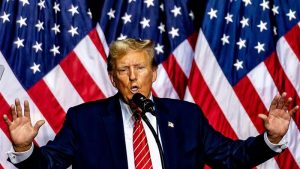Snapshot: China’s Central Bank Launches 10-Point Plan to Stabilize Markets
China’s central bank has announced a 10-point monetary policy package to boost liquidity, support innovation, and stabilize market expectations, as authorities step up macroeconomic regulation.
US-China Relations in the Trump 2.0 Era: A Timeline
This timeline was created on January 21, 2025, and was last updated on April 23, 2025. On April 21, 2025, US Commerce Department imposes steep tariffs on Chinese-made solar cell imports from Southeast Asia.
Albanese’s Re-election Reinvigorates China-Australia Trade Relations Amid US Tensions
Explore the latest developments in China-Australia trade relations, including agricultural exports and strategic diversification amid US-China trade tensions, under Australia’s PM Albanese’s renewed leadership.
2025 China Market Access Negative List: Further Openings in Manufacturing, Healthcare, and Entertainment
China’s 2025 Negative List further opens manufacturing, entertainment, healthcare, and IT sectors to private investment, signaling continued market liberalization.
EU-China Relations After the 2024 European Elections: A Timeline
Timeline tracking key developments affecting EU-China relations, including trade and business engagement, under the new European Parliament.
Can Hong Kong Capitalize on US Delisting Risks Facing Chinese Companies?
US delisting risks are prompting Chinese firms to pivot toward Hong Kong. This article explores whether the city can serve as a stable alternative amid growing geopolitical and financial tensions.
China’s Pilot Free Trade Zones – New Opinions Signal Further Regulatory Easing
China’s Free Trade Zones are pivotal to the country’s economic and industrial strategy, serving as testbeds for market reforms and opening-up policies. A new set of opinions signals broader regulatory easing.
Mapping Tariff Risk: Which Chinese Cities Are Most Exposed to Foreign Trade?
As global trade tensions escalate, this article maps China’s regional trade exposure—identifying which provinces and cities are most vulnerable to tariffs and how local policies are responding.
















